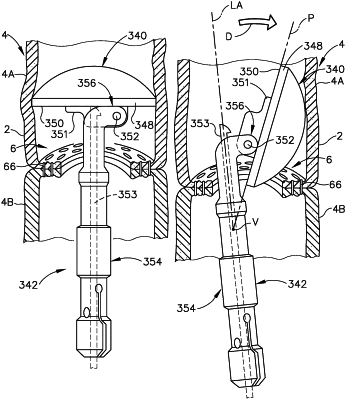| CPC A61B 17/1155 (2013.01) [A61B 17/1114 (2013.01); A61B 2017/00477 (2013.01); A61B 2017/07257 (2013.01); A61B 2090/0811 (2016.02); F04C 2270/041 (2013.01)] | 20 Claims |

|
1. An apparatus for stapling tissue, comprising:
(a) a stapling head assembly; and
(b) an anvil configured to form staples advanced by the stapling head assembly, the anvil comprising:
(i) an anvil head having a proximal face,
(ii) an elongate coupling member including a first portion and a second portion, wherein the first portion extends along a central axis from a proximal member end to the second portion, wherein the second portion extends non-parallel to the central axis from a distal end of the first portion to a distal member end that couples to the anvil head, wherein the proximal member end freely terminates and is configured to releasably couple with the stapling head assembly,
(iii) a pivot defining a pivot axis, and
(iv) a driver member movably disposed within the first portion of the elongate coupling member,
wherein the driver member is configured to urge the anvil head from a first position to a second position, wherein in the first position the proximal face is perpendicular to the central axis and in the second position the proximal face is obliquely positioned relative to the central axis.
|